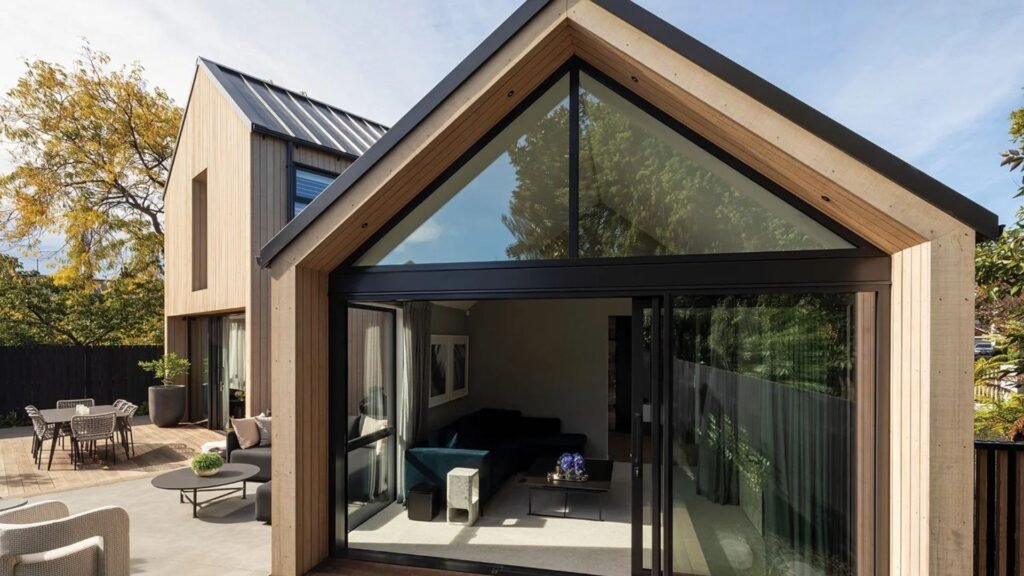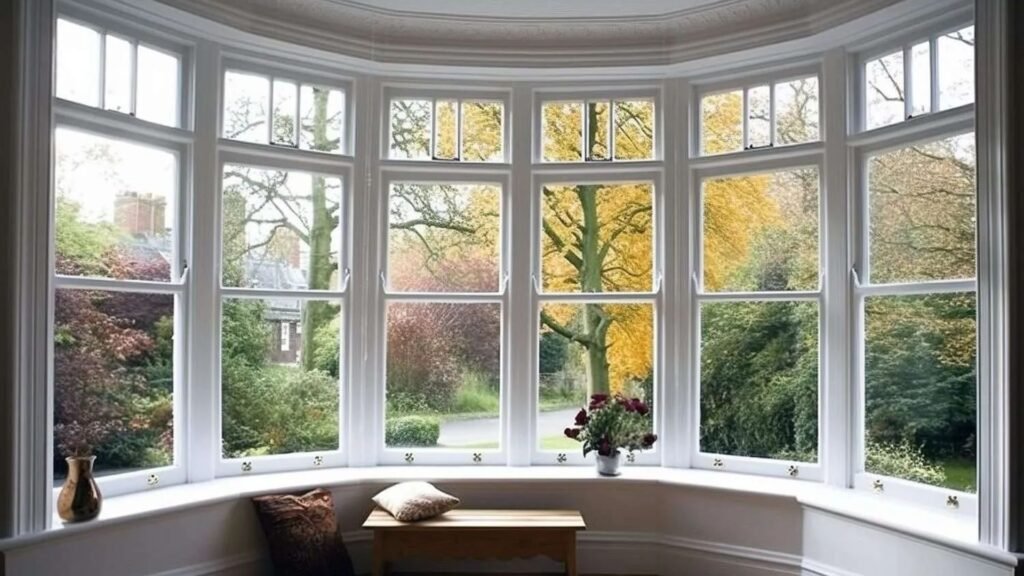Welcome to your guide on double glazing in New Zealand, where keeping homes warm, dry, and energy-efficient is becoming a top priority for many families. If you’ve ever struggled with cold drafts in winter, rising power bills, or noisy streets outside your window, you’ve probably wondered if there’s a better way to make your home more comfortable. That’s where double glazing comes in. By using two panes of glass separated by an insulating layer, double glazing helps retain heat, reduce noise, and cut down on condensation, a simple upgrade that makes a big difference in everyday living. In this article, we’ll break down what double glazing is, why it’s so popular across NZ, the benefits it brings, the costs involved, and how to decide if it’s the right choice for your home.
Double glazing in NZ refers to windows made with two panes of glass separated by a layer of air or gas, designed to improve insulation, reduce noise, and lower energy costs. Popular in New Zealand homes due to cold winters and damp conditions, double glazing helps keep houses warmer, drier, and more comfortable while increasing property value and security.
Table of Contents
What Is Double Glazing NZ?
Double glazing is a window made from two panes of glass sealed together with a gap in between to slow heat and noise transfer. If you’ve asked “what is double glazing NZ,” think of it as a simple way to keep homes warmer in winter and cooler in summer without cranking the heater. The sealed gap acts as a barrier, so less warmth escapes and less outside noise gets in. You get a drier, quieter, more comfortable home with lower power bills.
How Double Glazing Is Built
- Two panes of glass sit side by side and form a sealed unit.
- A spacer runs around the edge and contains a drying agent to stop moisture.
- The gap is filled with still air or an inert gas like argon.
- Strong edge seals lock everything in and prevent leaks.
- The unit fits into frames such as uPVC, thermally broken aluminium, or timber.
- Optional Low-E coatings reflect heat back into the room while letting in natural light.
How It Differs From Single Glazing
Single glazing uses one pane of glass. Heat moves through it fast, so rooms feel cold and damp in winter and overheat in summer. Condensation forms easily on the inside surface, which can lead to mold and damage to window frames. Double glazing adds a second pane and a sealed gap, which slows heat loss, cuts drafts, and reduces the chance of condensation. You also get better security and noticeable noise reduction compared with a single pane.
An Easy Analogy For Everyday Life
Picture a puffer jacket. The fabric traps a layer of still air that keeps your body warm. Double glazing works the same way, but for windows. The two panes are the fabric, and the air or argon gap is the insulation layer. That simple extra layer is why double-glazed windows feel warmer to stand next to and why homes with double glazing need less energy to stay comfortable.
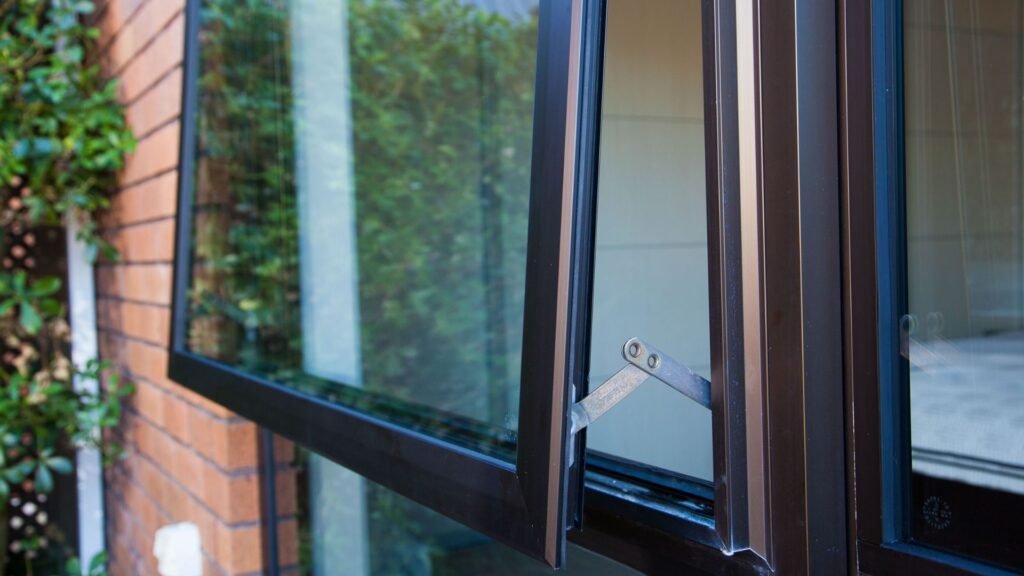
Why Double Glazing Is Popular In NZ Homes
Double glazing has become one of the most talked-about upgrades for New Zealand homes, and for good reason. With the country’s diverse climate, ranging from freezing winters in the South Island to humid, damp conditions in the North Island, homeowners are constantly searching for ways to make their living spaces warmer, drier, and more comfortable. Standard single-glass windows simply don’t perform well in these conditions, which explains why double glazing is growing in popularity across NZ.
Many older homes, especially those built before the 1970s, were constructed with single-pane windows. While this was the norm at the time, single glazing offers very little insulation. Heat escapes quickly in winter, and condensation builds up on cold glass, often leading to dampness, mold, and unhealthy living environments. With rising awareness of energy efficiency and healthier homes, New Zealanders are now looking for long-term solutions, and double glazing has proven to be one of the most effective options.
Another driving factor behind the demand is cost savings. Heating bills can soar in colder regions like Dunedin, Queenstown, or Wellington, where winters are harsh and energy use is high. By installing double glazing, homeowners can cut energy loss significantly, keeping heat inside during winter and reducing the need for constant heating. Over time, this translates into noticeable savings on power bills, making the investment more appealing.
Government updates to building codes and growing awareness of sustainable living have also played a big role. New builds are often required to meet higher insulation standards, and double glazing is now seen as a standard feature rather than a luxury. For homeowners renovating older properties, retrofitting existing windows with double glazing has become a practical and accessible solution, ensuring their homes are warmer, drier, and more energy-efficient.
Double glazing is popular in New Zealand because it directly addresses the country’s climate challenges, provides comfort and energy savings, and aligns with the push for healthier, more sustainable homes.
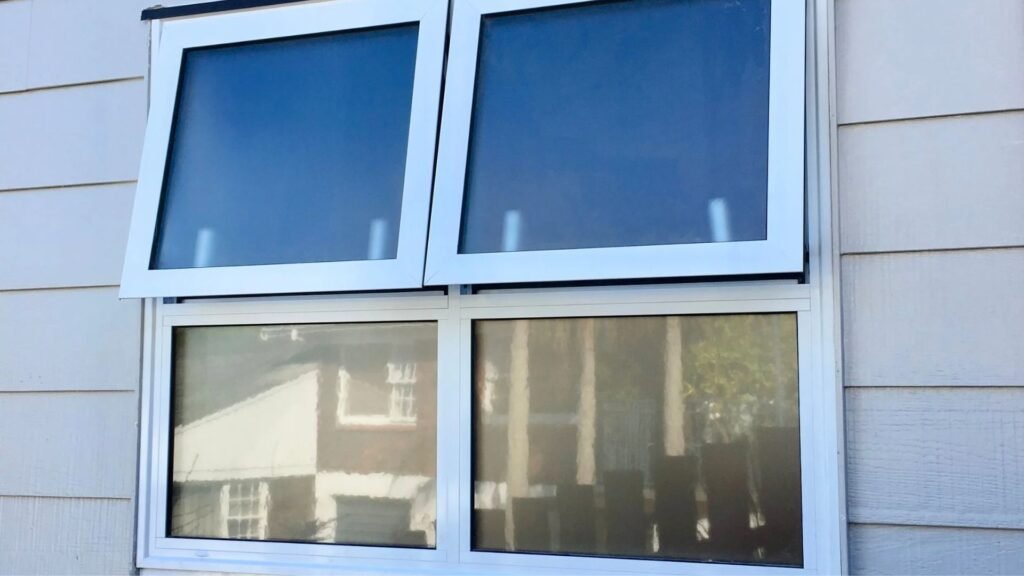
Key Benefits Of Double Glazing
Improved Insulation & Energy Efficiency
Double-glazed windows form an insulated barrier that slows heat loss in winter and heat gain in summer. You feel fewer drafts, your rooms hold warmth longer, and your heater runs less. That means lower power bills and a steadier, more comfortable temperature throughout the day. In many New Zealand homes with older single glazing, this upgrade delivers the biggest comfort jump for the money.
- Two panes plus an air or argon layer reduce heat transfer.
- Low-E coatings reflect heat back into the room while letting light in.
- Tight seals and quality frames cut gaps that leak warmth.
- Tip: If you live in cooler regions or a windy spot, pair Low-E glass with argon fill and thermally broken frames for stronger performance.
Noise Reduction
Busy street outside? Next-door renovation? Double glazing dampens sound by adding mass and space between panes. You notice fewer car engines, barking dogs, and late-night noise. Sleep improves, and work calls feel clearer.
- Glass thickness matters, mixing pane thicknesses targets different frequencies.
- Larger air gaps help absorb and disrupt sound waves.
- Laminated glass with a sound-dampening interlayer boosts results further.
- Tip: For homes near main roads, ask for an acoustic package that combines varied glass thickness, wider spacers, and laminated panes.
Reduced Condensation
Condensation isn’t just annoying; it feeds mold and dampness that can harm health and finishes. Double glazing keeps the inner pane warmer, which reduces the temperature difference that causes window fogging. Less moisture on the glass means less mildew on frames and sills.
- Warm inner surfaces cut the chance of water beads forming.
- Trickle vents or controlled airflow help manage indoor humidity.
- Proper installation and drainage stop moisture from getting trapped.
- Tip: In kitchens and bathrooms, pair double glazing with good extraction to keep humidity in check.
Increased Property Value
Buyers in NZ often look for warmer, drier, quieter homes. Double glazing signals comfort, lower running costs, and modern performance, features that help listings stand out. You also gain marketing hooks like “double-glazed throughout,” “Low-E,” or “thermally broken frames.”
- Better comfort can shorten days on market.
- Energy savings appeal to cost-conscious buyers.
- Fresh, low-maintenance frames improve street appeal.
- Tip: Keep invoices, product specs, and warranties. Documented upgrades support your asking price.
Better Security
Double-glazed units are harder to break than single panes. Many systems include stronger frames, multi-point locks, and laminated options that hold together even when cracked. You gain peace of mind without adding bars or bulky grilles.
- Two panes add resistance against impact.
- Laminated inner panes deter smash-and-grab attempts.
- Quality hardware and reinforced hinges reduce forced-entry risks.
- Tip: Choose laminated glass for ground-floor windows and sliding doors, and specify multi-point locking on key openings.
Get quotes that list glass type, spacer width, gas fill, frame material, and hardware. Compare like-for-like, ask about retrofit double glazing NZ options for existing frames, and confirm warranties on glass units and installation.
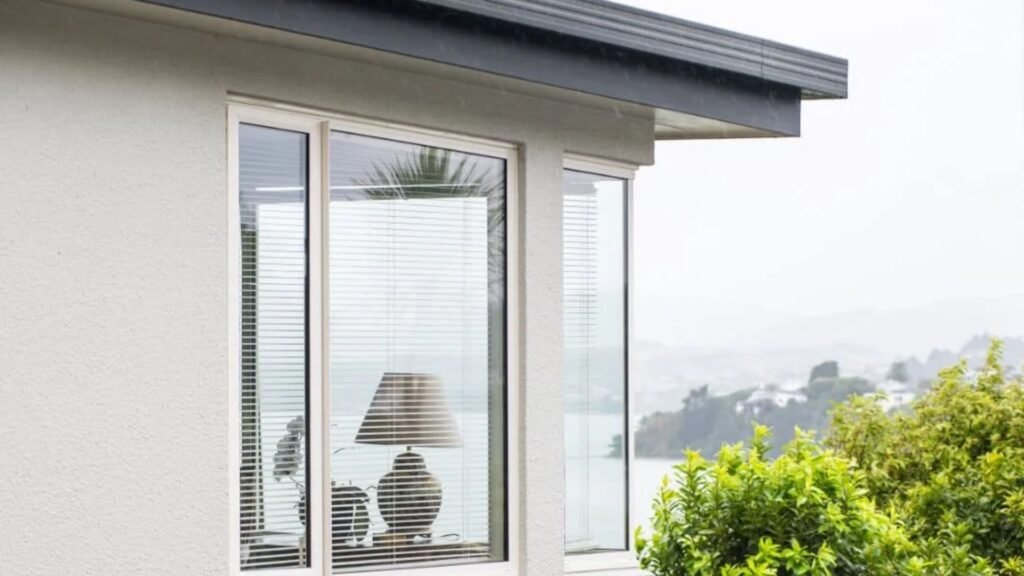
Types Of Double Glazing Available In NZ
When it comes to upgrading your windows, not all double glazing is the same. New Zealand homeowners can choose from a range of glass options, each designed to improve comfort, energy efficiency, or security in different ways. Below are the most common types of double glazing available in NZ.
Standard Double Glazing
This is the most common option and the one most people think of when they hear “double glazing.” Standard double glazing uses two panes of glass separated by a sealed air gap. This gap acts as insulation, slowing down heat loss in winter and reducing heat gain in summer. For many New Zealand homes, especially older ones built with single glazing, this simple upgrade can dramatically improve warmth and comfort indoors.
Low-E Glass (Energy-Efficient Coating)
Low-E, or “low emissivity” glass, takes standard double glazing a step further. It has a special invisible coating that reflects heat back inside during winter and keeps excess heat out in summer. This makes it one of the most energy-efficient options available. For New Zealand homeowners looking to cut power bills or reduce their carbon footprint, Low-E double glazing is often worth the investment. It’s especially effective in colder regions like the South Island, where retaining heat is a top priority.
Argon Gas-Filled Glazing
In some double-glazed units, the air between the panes is replaced with argon gas. Argon is denser than air, which makes it better at reducing heat transfer and improving insulation. While it costs slightly more, argon gas-filled glazing can deliver noticeable improvements in energy efficiency. It’s a great option if you’re already upgrading to Low-E glass, as the two technologies combined give superior performance for New Zealand homes exposed to harsh weather.
Tinted Or Laminated Options
For homes in sunnier or busier areas, tinted or laminated double glazing can be a smart choice. Tinted glass reduces glare and helps control solar heat, keeping living spaces cooler in summer. Laminated glass, on the other hand, adds an extra layer of safety and noise reduction. It’s tougher to break, which improves security, and it’s often chosen by homeowners living near busy roads or airports who want a quieter, more peaceful home environment.
Triple Glazing (Less Common In NZ)
While not widely used in New Zealand, triple glazing is worth mentioning. As the name suggests, it uses three panes of glass with two insulating gaps in between. This option provides even better insulation and noise reduction compared to standard double glazing. In colder parts of Europe, triple glazing is common, but in NZ it’s less popular due to the milder climate and higher costs. Still, for homeowners building new homes in especially cold regions, it can be an option to explore.
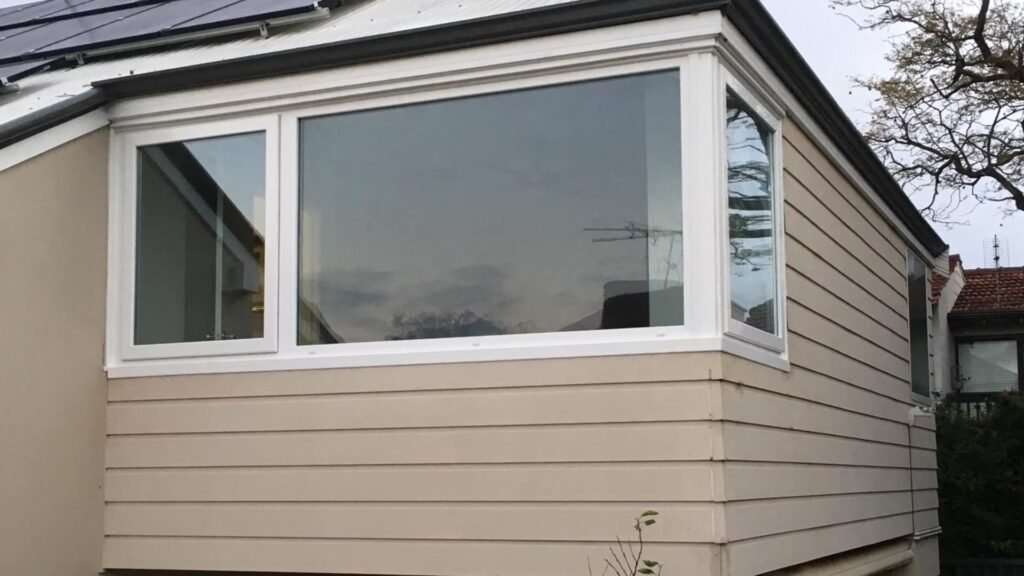
Cost Of Double Glazing In NZ
The cost of double glazing in NZ can vary widely, depending on the type of glass, the frame material, and whether you’re upgrading an existing home or building new. On average, homeowners can expect to pay anywhere from $500 to $1,200 per window for standard double glazing. For a full home, costs often range between $12,000 and $20,000, although larger properties or premium materials can push this figure higher.
Average Price Ranges
- Per Window: Basic retrofitted units may start at around $500–$600 each, while high-performance options such as Low-E or argon gas-filled panes can reach $1,000 or more.
- Per Home: A small to medium-sized house may cost around $12,000–$18,000 to fully upgrade. Larger homes with many windows or complex designs could see costs above $20,000.
Key Factors That Affect Cost
Several elements play a role in determining the final price of double glazing in New Zealand:
Type Of Frame
- uPVC: Often the most affordable and energy-efficient.
- Aluminium: Strong and low maintenance, but may require a thermal break to improve insulation.
- Timber: Offers a traditional look but is usually more expensive and requires ongoing maintenance.
Size And Style Of Windows
Larger windows, sliding doors, and custom shapes will naturally cost more.
Retrofit Vs. New Installation
Retrofitting existing frames is usually cheaper than installing entirely new windows. New builds or full replacements come at a higher upfront cost but may provide better long-term performance.
Government Incentives And Support
In some regions, New Zealand homeowners may access financial support for energy-efficient upgrades, including double glazing. Programs like the Warmer Kiwi Homes initiative sometimes offer grants or subsidies for insulation and energy improvements. Availability depends on your location and eligibility, so it’s worth checking with local councils or government websites for the latest details.
Long-Term Savings On Power Bills
While the upfront cost of double glazing can seem high, the long-term savings often outweigh the initial investment. By improving insulation, double glazing reduces the need for electric heaters or heat pumps in winter, leading to noticeable cuts in monthly power bills. Over the lifespan of the windows, often 20 years or more, homeowners can save thousands on energy costs while enjoying a warmer, quieter, and healthier living environment.
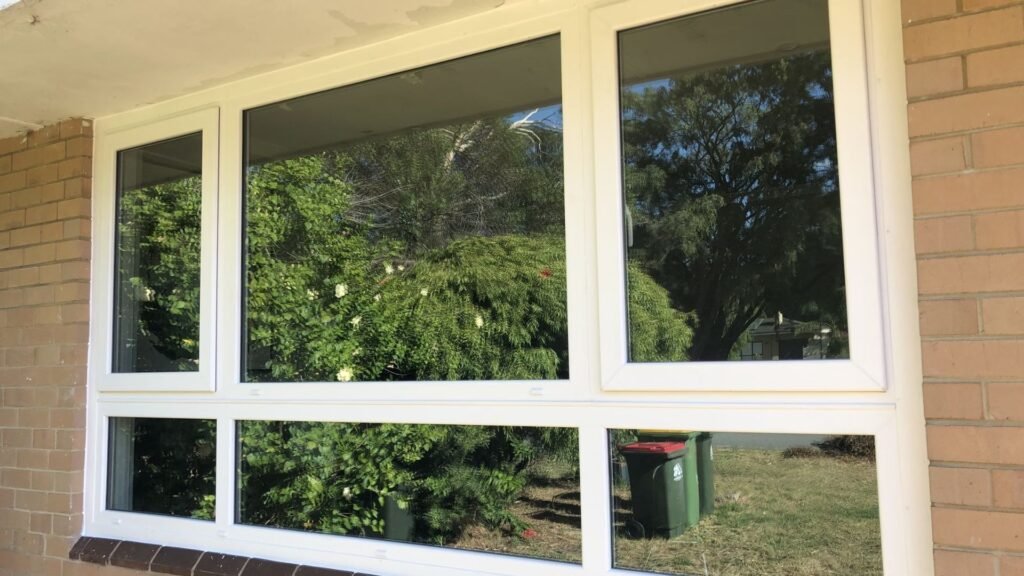
Retrofit Vs. New Double Glazing
When upgrading your windows in New Zealand, one of the first choices you’ll face is whether to go with retrofit double glazing or invest in a completely new installation. Both options improve comfort and energy efficiency, but the right solution depends on your home’s age, budget, and future plans.
What Is Retrofit Double Glazing?
Retrofit double glazing involves replacing the single-pane glass in your existing window frames with a new double-glazed unit. The original frame, whether it’s timber, aluminum, or uPVC, remains in place, which makes this option less disruptive and more cost-effective. For many NZ homeowners, especially those with older houses, retrofitting provides a practical way to enjoy the benefits of double glazing without replacing every window.
What Is New Double Glazing Installation?
A new installation means replacing the entire window unit, including both the frame and the glass. This approach is commonly chosen for new builds, large renovations, or when existing frames are damaged, outdated, or poorly insulated. New units often provide better long-term performance since modern frames are designed with double glazing in mind, offering improved insulation and a cleaner look.
Pros And Cons Of Retrofit Double Glazing
Pros
- More affordable than full replacements
- Less construction mess and disruption
- Maintains the original character of older NZ homes
- Faster installation process
Cons
- Relies on the condition of existing frames
- Not always compatible with badly damaged or warped windows
- Slightly less efficient than brand-new double-glazed units
Pros And Cons Of New Double Glazing Installation
Pros
- Maximum energy efficiency and performance
- Modern frames with better insulation properties
- Wider range of design and style options
- Ideal for major renovations or new builds
Cons
- Higher upfront cost compared to retrofit
- More time and disruption during installation
- May change the appearance of heritage homes
Which Option Suits Older NZ Homes Best?
For many older New Zealand homes, retrofit double glazing is the more practical choice. It allows homeowners to retain the original charm of timber or aluminum frames while improving warmth, comfort, and energy savings. Retrofit also tends to be more budget-friendly, making it a popular option across the country. That said, if your frames are rotting, outdated, or no longer structurally sound, a full new installation is usually the smarter investment.
The decision ultimately comes down to your home’s condition, your long-term plans, and your budget. If preserving character and saving money are top priorities, retrofit is often the way to go. If performance, durability, and modern style matter more, then investing in new double glazing will deliver the best results for your home.
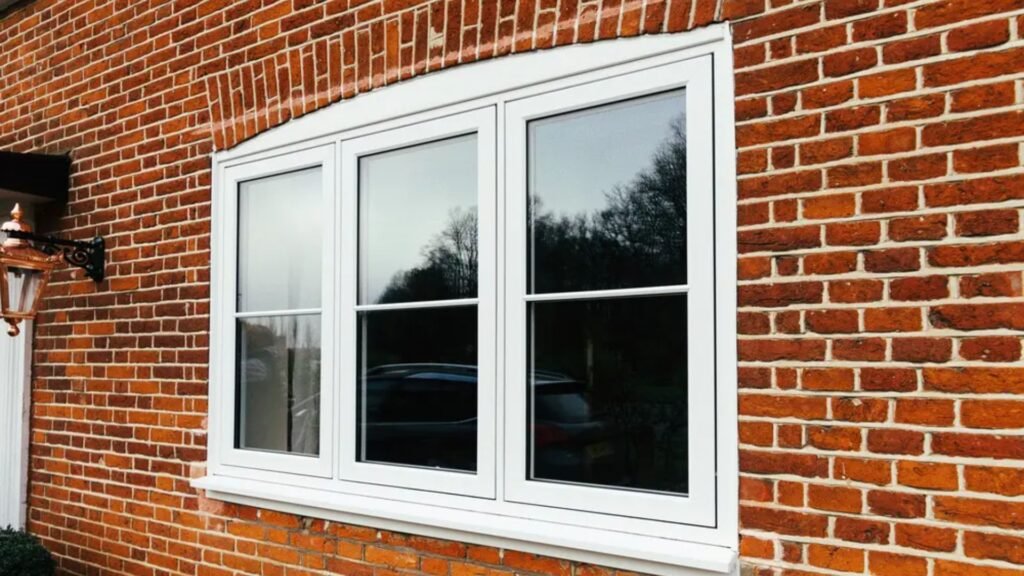
How To Choose The Right Double Glazing For Your Home
Pick windows that fit your climate, budget, and style. Use the steps below to make a confident choice.
Climate Zone
- Find your zone first. New Zealand now uses six climate zones for energy rules. Zones 1–2 are warmest; zones 5–6 are coldest.
- Match performance to the zone. In colder zones, target higher window R-values and consider Low-E glass, argon fill, warm-edge spacers, and thermally broken frames. These help meet H1 energy-efficiency requirements for windows and doors.
- New homes usually need double glazing to comply with the Building Code. If you’re renovating, aim to keep or improve H1 performance.
Budget And Energy Goals
- Set a clear goal: lower bills, less noise, less condensation, or all three. Then pick features that move that needle.
- Prioritize “bang for buck” upgrades: Low-E coatings, argon gas, and warm-edge spacers often deliver strong thermal gains without changing your frames.
- Plan for lifetime value, not just upfront price. Better glass and frames reduce heating demand and improve comfort across NZ’s varied climates.
Frame Material And Aesthetics
- uPVC: strong thermal performance and low upkeep.
- Aluminium (thermally broken): sleek look with improved insulation over standard aluminium.
- Timber: classic profile and good insulation; needs maintenance.
- In coastal or high-exposure areas, choose finishes and hardware suited to local wind and corrosion conditions.
Trustworthy Installers, Look For Certifications, Warranties, And Local Experience
- Shortlist local firms with a track record in your region and climate zone.
- Check membership and guides from the Window & Glass Association New Zealand (WGANZ). Use their resources and directories to find reputable manufacturers and installers.
- For retrofits, ask if they follow NZ best-practice for fitting new insulated glass units (IGUs) into existing frames. Request details on drainage, sealing, and weathertightness.
- Get written product specs that show window R-values and H1/AS1 compliance for your zone. Keep copies with your project file.
Checklist You Can Use Today
- Confirm your climate zone (1–6).
- Decide your top goal: warmth, quiet, condensation control, or resale.
- Choose glass package: Low-E, argon, and warm-edge spacer as needed.
- Pick frame type: uPVC, thermally broken aluminium, or timber.
- Ask for verified R-values for each window and door.
- If retrofitting, confirm installer follows NZ retrofit best-practice.
- Check supplier membership or accreditation (e.g., WGANZ resources and directories).
- Review warranties in writing for IGUs, frames, coatings, and workmanship.
- Confirm hardware and finishes suit local wind and coastal conditions.
- Schedule a final site measure and ask for a detailed install plan covering flashing, drainage, and sealants.

Common Questions About Double Glazing NZ
Does Double Glazing Really Make A Big Difference In NZ Homes?
Yes, double glazing makes a noticeable difference in most New Zealand homes. With many houses built using single-pane windows, heat loss is a common problem, especially in colder regions like the South Island. Double glazing reduces this heat loss by creating a thermal barrier, helping to keep homes warmer in winter and cooler in summer. Homeowners often report lower power bills, less condensation on windows, and improved comfort after installing double glazing. For busy city areas, the added noise reduction is another major benefit, making it easier to enjoy a quieter and more peaceful home.
How Long Does It Last?
Well-installed double glazing can last 20 to 30 years or more, depending on the quality of the glass and frames. Over time, seals may weaken, or gas between the panes may slowly escape, but reputable installers usually provide long-term warranties to give peace of mind. Regular maintenance, such as checking seals and cleaning frames, will help extend the lifespan. For many New Zealand homeowners, double glazing is a long-term investment that pays off in comfort, energy savings, and property value.
Can I Double Glaze Existing Wooden Frames?
Yes, many existing wooden frames in NZ homes can be retrofitted with double glazing. This process replaces the single glass with double-glazed units while keeping the original timber frame. Retrofit double glazing is often more cost-effective than replacing the entire window and allows you to keep the character of older wooden joinery, which is common in villas and bungalows across the country. The key is to work with a skilled installer who can assess the condition of your frames and ensure they are strong enough to hold the heavier double-glazed glass.
Is It Worth It In Warmer Regions Like Auckland?
Even in warmer areas such as Auckland or Northland, double glazing offers benefits beyond just keeping heat in. While the winters may not be as harsh as in the South Island, homeowners still deal with condensation, street noise, and rising power bills. Double glazing helps reduce these issues by maintaining a more stable indoor temperature, cutting down on moisture buildup, and making homes quieter. For households near busy roads or in humid regions, the comfort and energy efficiency gained from double glazing still make it a worthwhile upgrade.
Want lower power bills and a more comfortable home? Head to our homepage now and discover how we can help with the right double glazing solution.
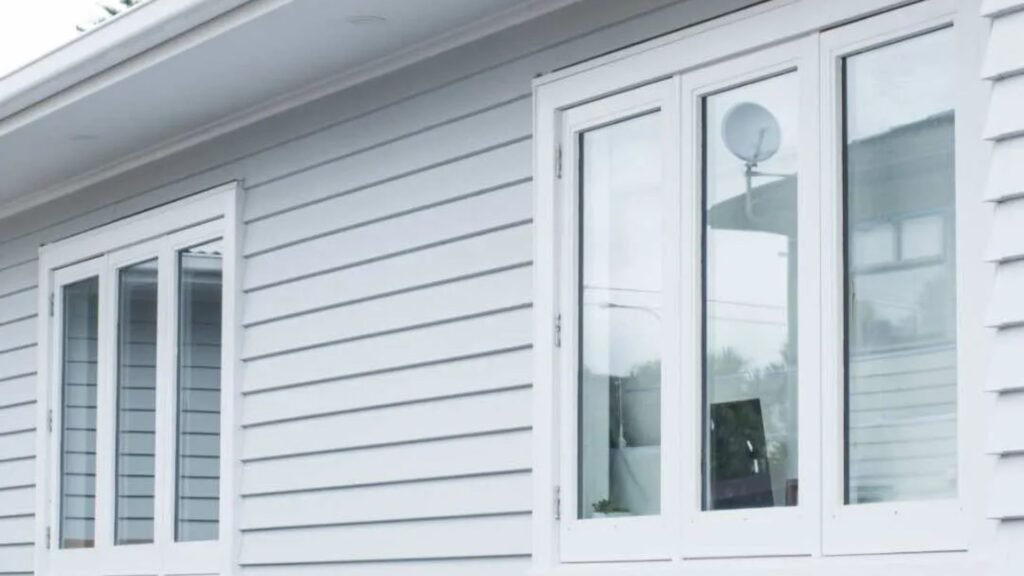
FAQs: About What Is Double Glazing In NZ
What is double glazing in NZ homes?
Double glazing refers to windows made with two panes of glass separated by a layer of air or gas. This design improves insulation, reduces outside noise, and lowers heating costs.
Why is double glazing popular in New Zealand?
New Zealand homes often face cold winters, damp conditions, and rising power bills. Double glazing helps retain warmth, reduce condensation, and create a healthier, more comfortable living environment.
How does double glazing work?
The two panes of glass trap air or gas between them, creating a barrier that slows down heat transfer. This keeps warmth inside during winter and reduces heat gain in summer.
What are the main benefits of double glazing?
Key benefits include improved insulation, energy savings, reduced noise, less condensation, better security, and increased property value.
What types of double glazing are available in NZ?
Options include standard double glazing, Low-E glass (energy-efficient coating), argon gas-filled glazing, and tinted or laminated glass for added performance.
How much does double glazing cost in NZ?
Costs vary depending on the type of glass, frame material, and whether you choose retrofit or new installation. On average, prices range from several hundred dollars per window to tens of thousands for a whole home.
Can existing windows be retrofitted with double glazing?
Yes. Many NZ homeowners choose retrofit double glazing, which allows glass units to be installed into existing frames, making it more affordable than full window replacements.
How long does double glazing last?
High-quality double glazing can last 20–30 years or more with proper installation and maintenance. Gas-filled units may slowly lose efficiency over time, but most come with long warranties.
Is double glazing worth it in warmer regions of NZ?
Even in warmer areas like Auckland, double glazing offers benefits such as noise reduction, reduced condensation, and lower energy bills during colder months.
How do I choose the right double glazing for my home?
Consider your climate zone, budget, frame materials, and performance needs. Always work with a certified local installer who provides warranties and proven experience in NZ homes.
Conclusion
Investing in double glazing is more than just upgrading your windows, it’s about creating a home that feels warmer, healthier, and more enjoyable to live in. By choosing double glazing, you can experience real comfort through better insulation, noticeable energy savings on your power bills, and a quieter living space that keeps unwanted outside noise at bay. For many New Zealand households, these benefits make a lasting difference in daily life, from reducing dampness and condensation to improving overall property value. If you’re considering making the switch, it’s worth reaching out to trusted local installers for tailored quotes and advice that match your home’s needs. At the end of the day, double glazing isn’t just about glass, it’s about building a space where your family can thrive, stay warm in winter, and enjoy a more sustainable lifestyle year-round.


